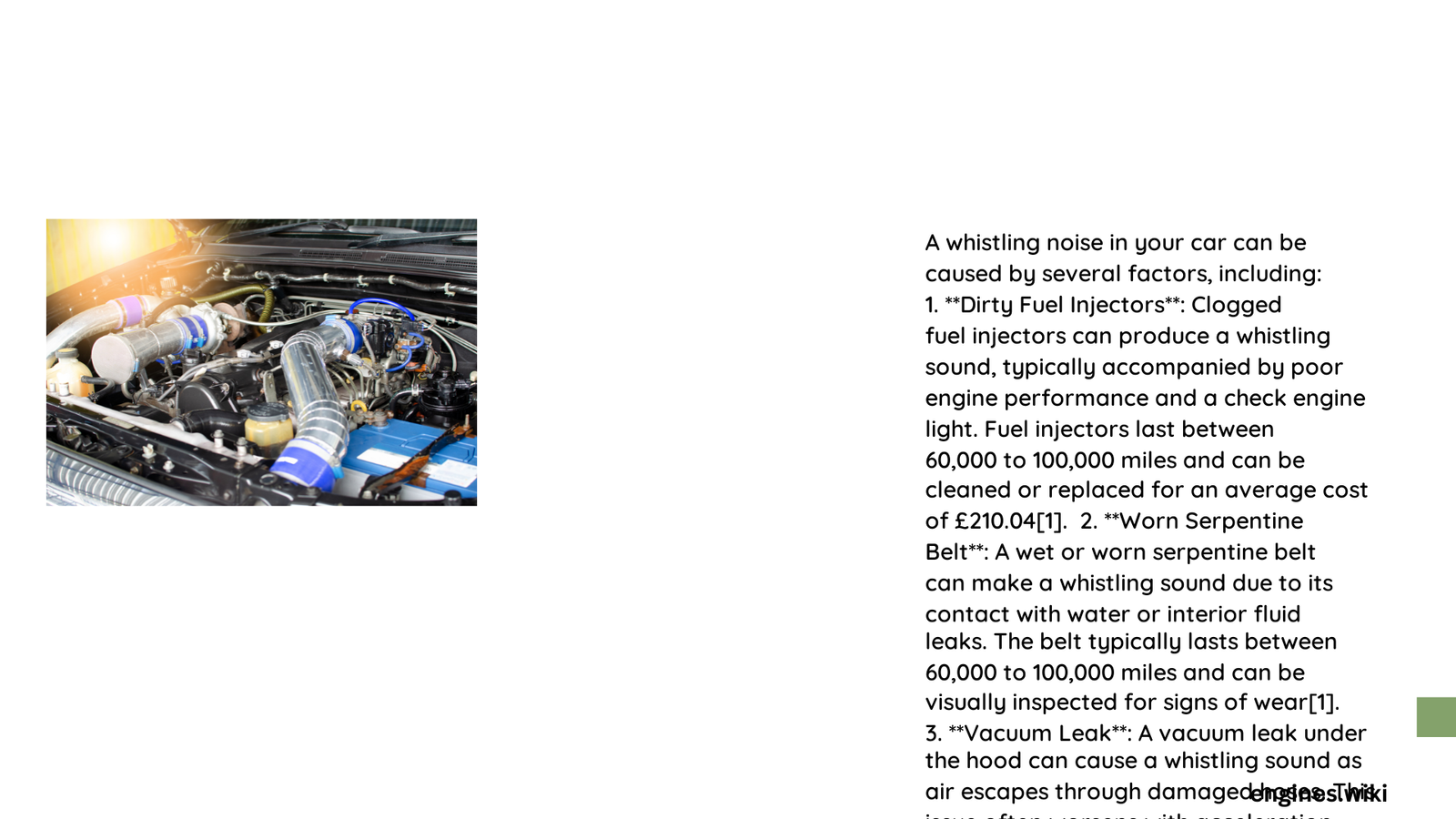Engine whistling can be a perplexing and potentially serious automotive issue that signals underlying mechanical problems. When your vehicle produces an unexpected high-pitched sound during acceleration or idle, it’s crucial to understand the potential causes, diagnostic methods, and repair strategies to prevent extensive engine damage and ensure optimal vehicle performance.
What Causes Engine Whistling?
Vacuum Leak Detection
Vacuum leaks represent one of the most common sources of engine whistling. These leaks occur when unmetered air enters the engine’s intake system, disrupting the precise air-fuel mixture required for optimal combustion.
Key Indicators of Vacuum Leaks
- Whistling sound during acceleration
- Inconsistent engine performance
- Reduced fuel efficiency
- Potential check engine light activation
| Leak Location | Potential Symptoms | Repair Difficulty |
|---|---|---|
| Intake Manifold Gasket | Constant whistling | Moderate |
| Vacuum Hose Connections | Intermittent noise | Low |
| Cracked Vacuum Lines | Consistent whistling | Low-Moderate |
Belt System Complications
Serpentine belt issues frequently contribute to engine whistling. A worn, loose, or damaged belt can produce distinctive high-pitched sounds that indicate imminent mechanical failure.
Belt-Related Whistling Symptoms
- Squealing during engine startup
- Chirping sounds while accelerating
- Visible belt wear or fraying
- Reduced performance of accessories
Diagnostic Strategies
Professional Inspection Techniques
- Utilize specialized vacuum gauge for precise measurements
- Perform comprehensive visual belt system inspection
- Check for visible hose or connection damage
- Use diagnostic scan tools to identify potential trouble codes
Repair Cost Considerations
Estimated Repair Expenses:
– Vacuum Leak Repair: $50 – $150
– Serpentine Belt Replacement: $100 – $250
– Comprehensive Diagnostic Service: $80 – $120
Prevention and Maintenance
Proactive Maintenance Recommendations
- Regular visual inspections
- Scheduled belt replacements
- Consistent vacuum system checks
- Timely fluid maintenance
Technical Insights
Precision Diagnostic Parameters
- Typical Vacuum Pressure Range: 17-22 inches Hg
- Acceptable Belt Tension: 1/2 inch deflection
- Recommended Inspection Frequency: Every 6 months
Warning Signs Requiring Immediate Attention
🚨 Critical Indicators:
– Persistent whistling sound
– Reduced engine performance
– Unusual acceleration characteristics
– Inconsistent idle conditions
Expert Recommendations

Addressing engine whistling promptly can prevent extensive mechanical damage. While some causes are minor, others might indicate significant underlying issues requiring professional intervention.
When to Seek Professional Help
- Continuous whistling sound
- Accompanied performance degradation
- Complex diagnostic requirements
- Lack of technical expertise
Final Thoughts
Understanding engine whistling involves recognizing subtle mechanical signals and responding with informed, strategic diagnostics. By combining technical knowledge, systematic inspection, and proactive maintenance, vehicle owners can effectively manage and mitigate potential engine complications.
Technical Expertise Disclaimer
Always consult certified automotive professionals for definitive diagnostics and repair recommendations tailored to your specific vehicle model and condition.
